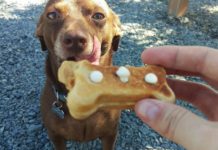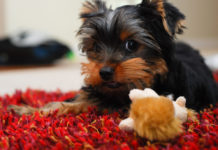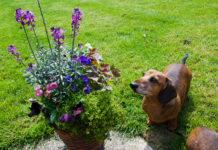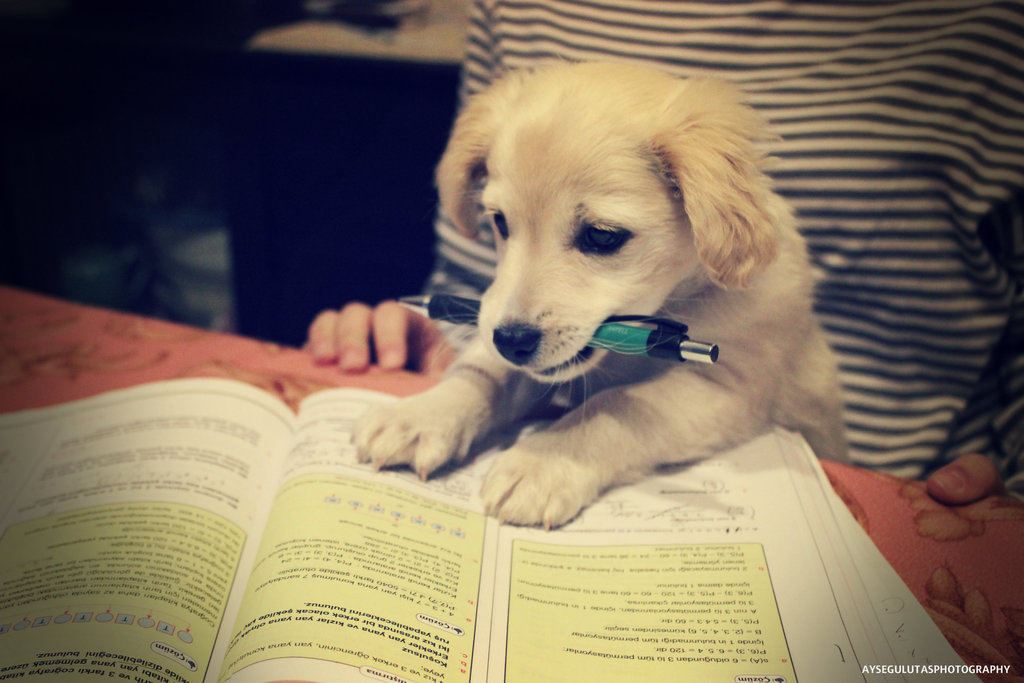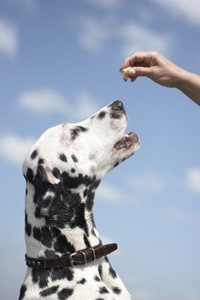
In our article on “How Dogs Learn“, I touched on 2 major ways in which dogs learn new things about their environment. Through learned associations and the realization that their actions really do have consequences (both good and bad), dogs are able to make reasonable assumptions about environmental events, decide whether those events are favorable or not, and then learn how to make those events occur more often, less often, or not all. Now we need to begin talking about Stages of Learning.
In this section, I will talk about the different stages of learning and how you can apply them, along with the information discussed in Part I, to get the most out of all of your training situations.
The reason we think in terms of training, or learning in stages is because, in order to train a dog to perform some act or series of acts reliably and consistenly, it’s usually easier to break the learning or training process down into smaller, more manageable pieces. This will help make even the most daunting task or training situation seem almost like child’s play. It will also allow for many more confidence-building opportunities along the way.
The stages of learning serve as a training framework; so the training can progress logically from less-complex to more-complex concepts to allow the dog to succeed many times during the process.
The four steps, or stages of learning that we’ll use are the following:
- Acquisition Stage
- Automatic Stage
- Generalization Stage
- Maintenance Stage
Acquisition – Stages of Learning
You can think of the Acquistion stage as the entry point into the learning process. This is where the dog first becomes exposed to a learning or training opportunity. This is also where the dog first learns that certain activities are either rewarding or not rewarding.
For example, if we are training our dog to Sit upon hearing the word “Sit”, the Acquistion stage is where we would first show the dog what the act of “sitting” is and why he should do it. A very basic way to begin the process would be to bait a nice tasty treat in our hand and slowly begin to move it up and over the dog’s head. The goal in moving the treat over the dog’s head is that, as he is looking up at the treat, he’ll will then place his back-end on the ground, and sit to look at it. At that precise moment, we would reward the dog (tasty treat, petting, play, etc…) for doing so.
At first, the dog may not fully understand what you are trying to get him to do and may look at you with a blank stare, as if to say, “Ok, what am I supposed to do with that?”. However, after he’s been exposed to the exercise a few times, he’ll soon pick-up on what he needs to do, and realize that by doing so, he’ll recieve a nice tasty reward. This is the beginning of the learning process.
Through this exercise, the dog learns an important association between seeing the baited hand, the act of sitting to follow the hand, and ultimately receiving a reward for doing so. He has also learned another important lesson in that, by performing the “sitting” action, he has the ability to make good things happen. This will be the dog’s motiviation to perform the operation again when he sees similar circumstances in the future.
Automatic – Stages of Learning
The Automatic stage is where the dog really starts to put the repetition of previously trained sessions or general environmental occurences together, and the “lightbulb” first goes off in his head. This is where he really begins to see the relationship, or association between different things that may be happening to him, and around him, and he then starts to “learn” what he needs to do in response to those things.
During this stage, he is becoming more and more alert to what he’s been seeing and/or hearing, and proficient in knowing what he needs to do about those things, when he sees or hears them.
So, going back to our training example, within the Automatic stage, the dog is really beginning to pick-up on what we’re trying to get him to do. He’s recognizing and responding to the hand movement easily, and offering the “Sit” behavior, fairly quickly. He may even begin to “Sit” well before the luring movement is completed. At this stage, we would also be able to begin adding the word “Sit” to luring movement.
The dog would then begin to associate the word “Sit” with the hand movement. Finally, we would remove the food lure altogether, and rely solely on the verbal “Sit” cue to get the dog to offer the sitting behavior. During all of these different exercises, we would be progressing the dog through the Automatic stage of learning.
Generalization – Stages of Learning
The Generalization stage really just adds upon, or broadens the scope of the Automatic stage. In this stage, the dog applies what he has learned to a variety of different situations or circumstances.
In returning to our training example at this point the dog has become fairly proficient in hearing the verbal cue “Sit” and responding according in a few areas within his home. However, upon hearing the cue in other locations, the backyard perhaps, or possibly the petstore, his proficiency and reliability become very poor or even nonexistent. The goal now is to get the dog to respond reliably to the “Sit” cue in those two locations, as well as in any other location or situation he may be faced with.
This is generally accomplished by training the dog within the contexts of those new locations and making it easy for him to learn by taking a few steps back in the training process and teaching him the basics once again. If you want your dog to perform in a certain way in a certain environment or situtation, you’ll need to train him specifically in those places. You’ll also need to add the element of training him though various types of distractions, so that, no matter he’s faced with, he’ll be able to focus on you and respond to your cues.
Maintenance – Stage of Learning
Finally, the Maintenance stage is reached when the dog has a thorough understanding of a particular learned behavior, and can apply that behavior in a variety of different situations with a high degree of reliability. The new, learned behavior has become second nature to the dog. At this stage, intermittent training is still required to maintain that level of generalization and reliability. Training is a lifelong committment. Depending on the dog, only a small amount of occasional training is all that may be needed. Other dogs may need some “refresher” exercises from previous stages to help maintain a high degree of learned knowledge.
To summarize, in thinking about how dogs learn and how to go about training them, it’s often helpful to think in terms of training in a series of stages. These stages aren’t ridgidly meant to be concrete boundaries that the dog must, without flaw, complete or pass before moving on to the next stage. They are to be used as a training framework to help organize your training efforts, and break them up into smaller, more manageable pieces. This will allow you to develop a more structured training plan, which will be easier for your dog to understand and follow, be more efficient, and allow you both to have more fun in the process.


